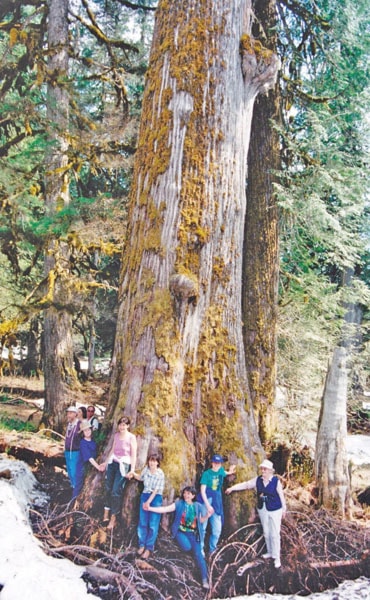Not just talk, but action.
That has been the driving force behind the Shuswap Environmental Action Society (SEAS) that is celebrating 25 years of advocating for the environment.
“I feel like it’s been an amazing amount of effort and time and achievements,” says SEAS president and founding member Jim Cooperman. “It’s basically we worked hard to make conservation an issue here in the Shuswap, and all of our work resulted in achieving the goals that we set.”
SEAS began modestly in 1989, when Cooperman realized there was no organization in the Shuswap dealing with environmental issues.
Cooperman, who had a background in forestry and owned a sawmill, says there was fierce resistance throughout the province to a government plan that would basically privatize the forest industry.
“My knowledge of forestry issues combined with a passion for the environment was one of the catalysts for starting the organization,” he says, noting forest practices were terrible in the ’80s and early ’90s prior to the Forest Practices Code “I got involved in the fight by writing a long brief and presenting it to the minister in Kamloops. And shortly after that we formed SEAS.”
The first big event SEAS hosted was an Earth Day fundraiser at the Salmon Arm Rec Centre in April 1989.
A huge success, it raised enough money to produce the first of three issues of Shuswap Eco-watch, educational newsletters that were distributed in the Observer and Shuswap Market News.
Cooperman estimates 20 to 30 active members formed SEAS, some of whom had been involved in environmental issues in the past – mostly fighting against the uranium exploration that had been planned for Silver Creek.
“The first main issue we tackled was the dumps, because they were burning plastic,” he says, noting the issue also formed the first of many presentations he has made to the Columbia Shuswap Regional District over the years.
The organization also became actively involved with conservation, at a time when parks were scarce.
“SEAS created more than 25,000 hectares of new parks but it took years and years of hard work to get there,” he says. “We cleared routes into the wilderness, produced map brochures to help get people out there to experience wilderness, did a 15-minute video, hired airplanes to take aerial photos and made countless trips into the wilderness, taking various people with us – provincial experts, dignitaries.”
SEAS also campaigned hard for a land-use planning process for the Shuswap.
“Kamloops had the first LRMP (Land and Resource Management Plan) but it only dealt with a small part of the Shuswap,” he says, noting that SEAS undertook a new collaborative role in the subsequent Okanagan-Shuswap LRMP, a long process that included mapping, studies and presentations.
“Then finally, in the last year of the process, it evolves into negotiation and we were successful in that we protected Anstey-Hunakwa and the Upper Seymour River where there is actually an antique forest.”
Cooperman says the antique forest, the rarest in the area and quite likely all of North America, once existed along the full length of the river.
“Most of it had been logged out by the time we got going and we had to get the regional forestry manager to issue a moratorium.”
Through the efforts of SEAS, thousands of hectares of old-growth trees were protected, including an area of Larch Hills.
The organization also fought to halt private sewage effluent outfalls into Shuswap Lake, logging in viewscape areas and development at the mouth of the Adams River. At the same time, SEAS campaigned for the establishment of parks.
“One of our grandest accomplishments is the mapping work we did,” says Cooperman, of the detailed and colourful map of the entire Shuswap watershed and online educational handbook.
“Over the years, we’ve had so many people involved with SEAS; virtually hundreds who have put in there time and effort to support the cause.”
